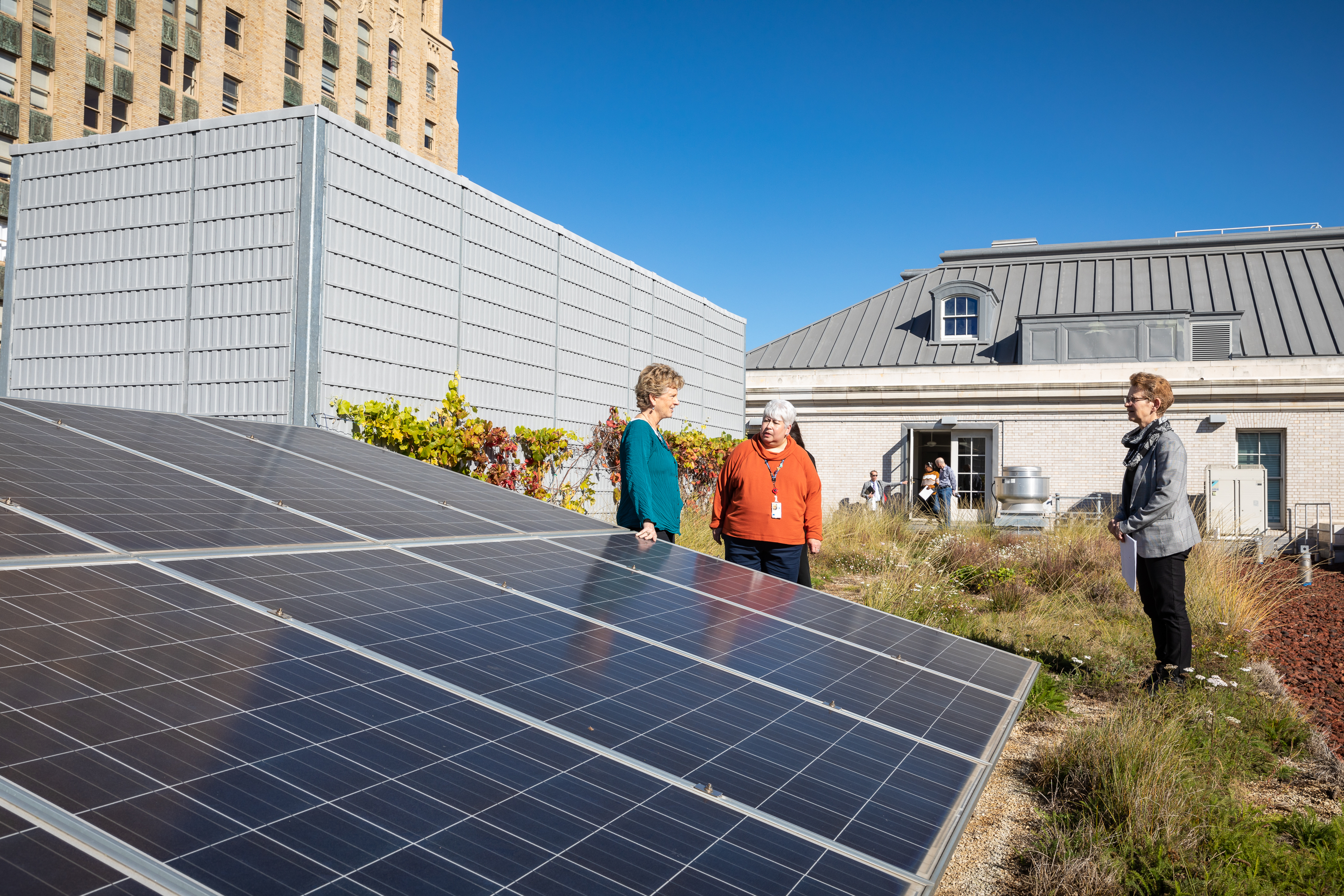
Greenbuild to showcase GSA leaders, other experts at sustainability conference
Post filed in: Green Buildings | Innovation | Public Buildings Service | Sustainability
The impact of funding from the Inflation Reduction, environmental justice in energy and environmental design, and more will be important components at the largest annual gathering for green building professionals worldwide this week in Washington, D.C.
The Greenbuild International Conference and Expo will feature speakers from the federal government, including GSA, bringing together green building professionals to improve sustainability, resilience, equity, health and wellness in the spaces where people live, work, play and learn, according to Greenbuild’s website.
Inflation Reduction Act
GSA’s Public Building Service Commissioner Nina Albert will present with colleagues from the U.S. Department of the Treasury, the U.S. Department of Energy, and the U.S. Environmental Protection Agency on key opportunities stemming from the Inflation Reduction Act.
GSA has made important commitments to greening the federal footprint with the $3.4 billion it received under the Inflation Reduction Act, which turned one last month.
“GSA has a goal to buy 100% carbon-pollution free electricity by 2030 and have a federal portfolio of 100% net zero buildings by 2045,” said Albert. “Funding from the Inflation Reduction Act is helping us accelerate reaching these goals by making federal buildings more sustainable and more resilient.”
GSA Administrator Robin Carnahan, who will speak at the Government Summit on Tuesday, will report on GSA’s progress in implementing IRA funds. She will also emphasize the growing importance of government partnerships at all levels as well as public-private partnerships.
Environmental Justice
Another area of discussion at the event will be environmental justice.
Historically underserved communities—including rural, Tribal, low income, and urban communities of color—are disproportionately burdened by negative effects of climate change. Environmental injustices—chronic flooding from aging water systems, heat islands caused by lack of tree canopy, hazardous waste sites, and air pollution from commercial traffic patterns—compound social and economic disparities. Environmental injustice is also linked to poverty and poor health, including lack of access to medical and preventive care, lack of safe play spaces for children, lack of access to healthful foods, and absence of good jobs, according to studies.
These factors can now be better tackled as part of federal investment activities with the White House Council on Environmental Quality’s climate & economic justice screening tool.
GSA will lead a Greenbuild session on its approach to equitable development, community engagement, and environmental justice principles on its projects. Andrea M. O’Neal, GSA’s Senior Advisor to the Administrator for Equity will be one of the presenters.
“The federal government has a mandate to ensure that all communities benefit from more collaboration and the improved livability and vitality that will come from these once-in-a-generation climate and infrastructure investments,” said O’Neal.
With GSA’s Chief Architect Chuck Hardy and the director of GSA’s Urban Development Program Frank Giblin, O’Neal will discuss GSA’s Good Neighbor Program. The program works with local communities to address environmental justice concerns in the design and construction planning process.
GSA is embracing whole-of-government efforts to advance equity for underserved communities and revitalize our nation’s commitment to environmental justice.
New LEED version
Another important topic at Greenbuild will be Leadership in Energy and Environmental Design, or better known as LEED, which is the most widely used green-building rating system in the world. The universal certification system that rates a building’s environmental efficiency is about to get an un upgrade after 10 years.
Lance Davis, GSA’s sustainability architect, will present about LEED’s latest version – v5 – at Greenbuild. Davis says a lot has changed since LEED v4’s debut in 2013.
“Back in 2013, we weren’t talking about carbon, we weren’t talking about embodied carbon, the bio-diversity dilemma and we weren’t talking about equity from the built environment perspective, or social justice,” Davis said. “These were all new topics that were incorporated into version five.”
The U.S. Green Building Council is the nonprofit organization that oversees the LEED certification process. The latest iteration of the LEED green building program is designed to advance decarbonization, equity, health, biodiversity, and resilience in the built environment, according to USGBC.
At GSA, new construction and substantial renovation of federally owned facilities must be LEED Gold at a minimum.
For more information on GSA’s sustainability priorities and planned activities at Greenbuild, visit GSA’s Sustainability Priorities webpage.

 U.S. General Services Administration
U.S. General Services Administration
